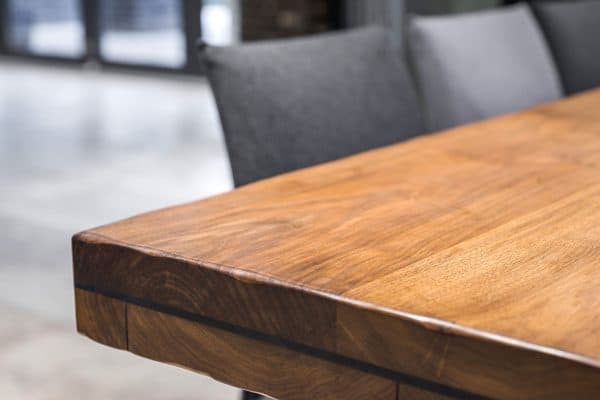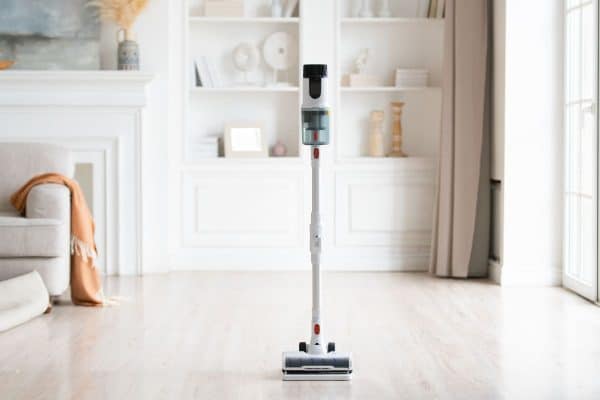Adding stain to hardwood floors is a task that is generally simple and does not require any professional help. But after you have completed it, how long before you can walk on them? The answer may surprise you.
Typically, you should wait 24 hours after adding stain to your hardwood floors before walking on them. This gives the stain ample time to dry and set into the wood. After 24 hours, it is recommended to wear socks or soft-soled shoes when walking on the floors to avoid scuffing.
By giving your floors time to cure, you'll be able to enjoy them for years to come. In this article, we will take a closer look at the process of adding stains to hardwood floors and how long you should wait before walking on them. In addition, we will answer other frequently asked questions about staining floors, so read on!
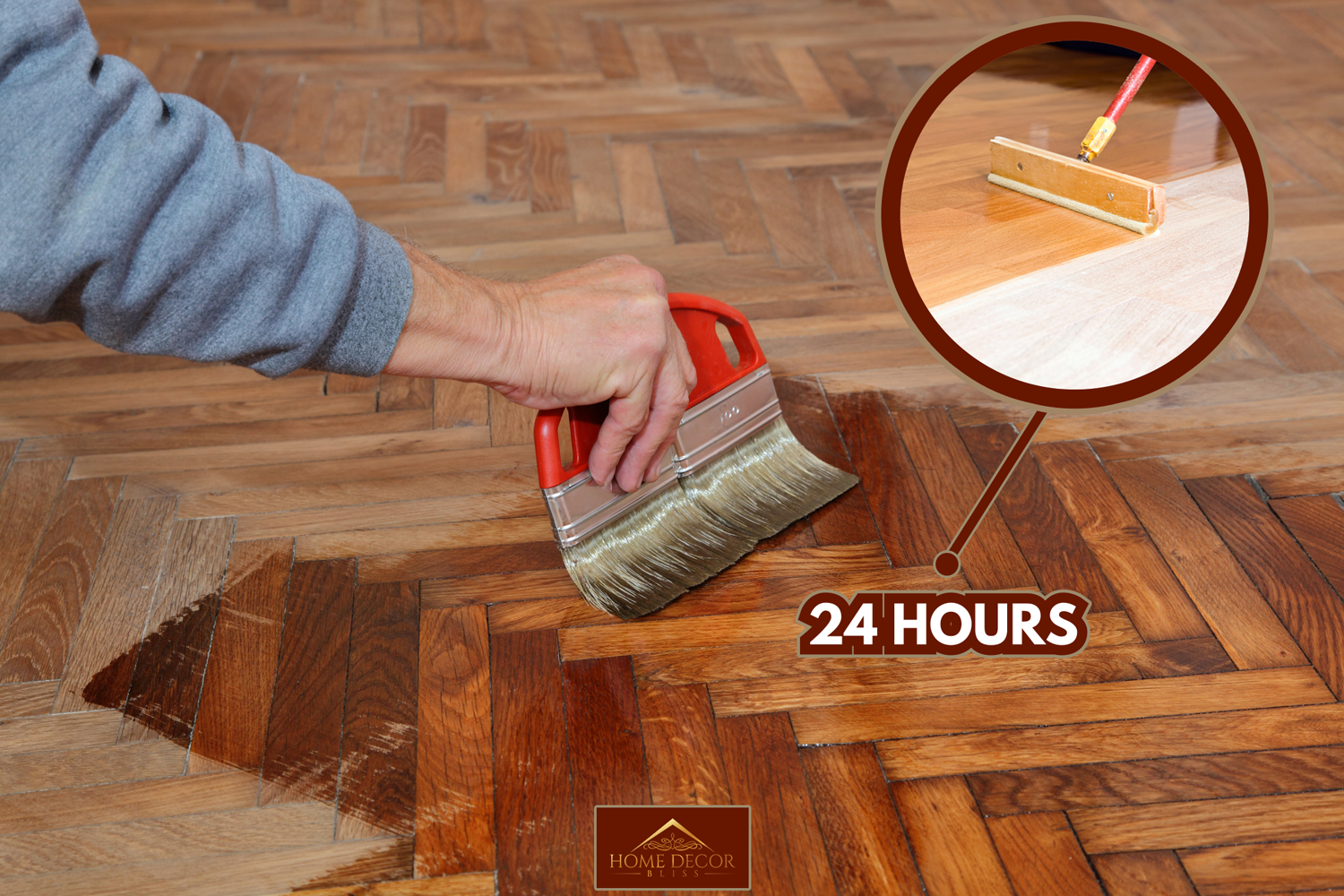
Why You Should Wait to Walk on Stained Floors
Hardwood floors are stained to give them a richer, more vibrant color. However, it needs time to dry for the stain to set properly. In addition, the stain provides a protective layer for the wood, and this layer needs time to cure to be effective.
If you walk on your floors too soon after staining them, you run the risk of damaging the finish. In addition, your footsteps may leave imprints in the still-drying stain, which will be difficult to remove. By waiting 24 hours, you can be sure that your floors are completely dry and ready to withstand regular use.
Use Caution when walking on the Floors
In addition, after the 24 hours have passed, it is important to take care when walking on the floors. It is recommended to wear socks or soft-soled shoes to avoid scuffing the floors. You should also avoid moving furniture or other heavy items across the floor, as this can also damage the finish.
Wearing regular shoes like sneakers or boots on newly stained floors is not recommended, as the soles can be quite abrasive. If you must walk on the floors with these types of shoes, make sure to put down a rug or mat to avoid scuffing the floors.
If you are staining a high-traffic area, it is best to wait a few days before walking on the floors to allow the finish to cure fully. Try to plan the staining when you have limited traffic in the area, such as over a weekday when you are at work and the kids are at school. This will give the floors plenty of time to dry and cure before they see regular use again.

We may include affiliate links and curated AI content to highlight top design styles.
How Long Should Before Replacing Furniture on Stained Floors?
In addition to limiting foot traffic, it is also important to avoid replacing furniture on newly stained floors. This is because the furniture can easily scuff or damage the finish. If you must replace furniture, be sure to lift it rather than dragging it across the floor.
It is best to wait at least 72 hours before replacing furniture on newly stained floors. This gives the stain ample time to dry and the finish plenty of time to cure. After 72 hours, you can replace furniture and other items on the floor, but be sure to use caution and avoid dragging them across the surface.
Instead, have someone help you lift the furniture into place to avoid damaging the floors. You should also use felt pads or other protective measures on the feet of the furniture to avoid scratching the floor.
Additional Tips for Staining Floors
When adding stain to your hardwood floors, it is essential to follow the manufacturer's instructions carefully. This will ensure that you apply the stain correctly and dries properly.
In addition, be sure to work in a well-ventilated area to avoid inhaling fumes from the stain. If possible, open windows and doors to allow fresh air into the room.
It is also a good idea to wear gloves and old clothes when applying stains to your floors. This is because the stain can be difficult to remove from clothing and skin.
Finally, clean up any spills immediately to avoid damaging the floors. Use a soft cloth to blot the spill and follow up with a cleaner designed for hardwood floors.
By following these tips, you can be sure your newly stained floors will look great for years to come.
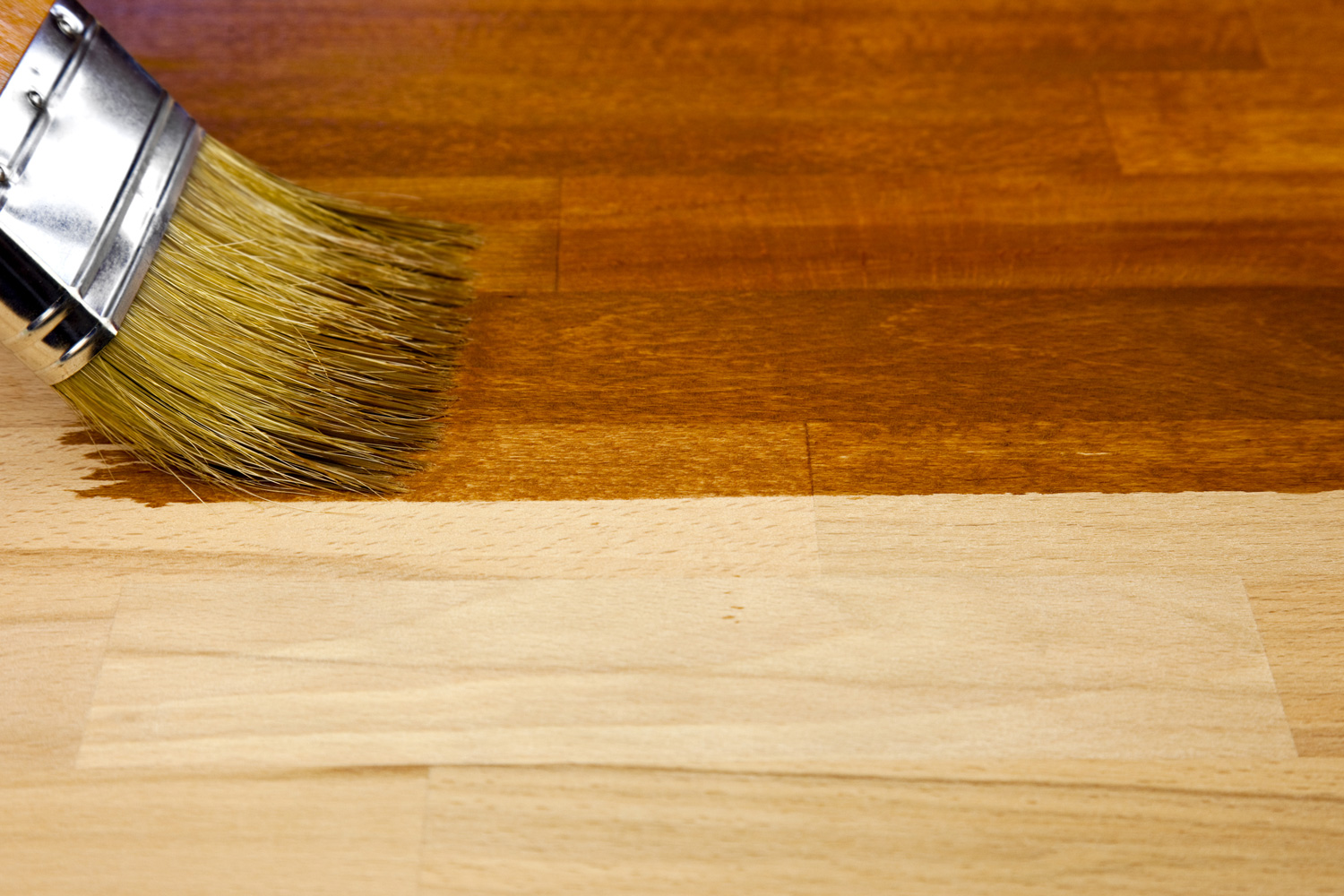
Can You Stay in the House When Staining Floors?
Living in the house while it's being stained for a minimum of two days is not recommended.
When the stain is being applied to floors, there will be fumes. These fumes can be dangerous if inhaled for too long. If you are going to stay in the house, open windows and doors to get fresh air circulating. You should also leave the room where the staining occurs and only return once the stain has been applied and the area has been ventilated.
Also, during the sanding process, there will be a lot of dust in the air. This dust can be harmful if inhaled, so it is also best to leave the house during this part of the process. If you must stay in the house, wear a mask to avoid inhaling the dust.
Once the stain has been applied and the area has been ventilated, it is safe to return to the house. If you are doing a bedroom, you can sleep in the room once the stain has dried.
Setting up a sleeping area while the floors are stained is best. This will ensure that you aren't exposed to the fumes for too long.
Generally, it's best to leave the house while the floors are stained and sanded. This will ensure you aren't exposed to fumes and dust for too long. If you must stay in the house, take precautions to avoid exposure as much as possible.
Can You Get Sick from Wood Stain?
If precautions aren't taken, you can get sick from wood stain.
Wood stain fumes can be dangerous if inhaled for too long. These fumes can cause headaches, dizziness, and nausea. If you have kids and pets, leaving the house while the floors are stained is best.
As we mentioned earlier, if you can live elsewhere for a few days, that might be the best option. With Airbnbs or hotels, you can find a place to stay that won't break the bank.
If you must stay in the house, take precautions. You may want to stain one section at a time and leave the house for a few hours while the fumes dissipate.
Another option is to purchase an air purifier to help remove the fumes from the air. This isn't a perfect solution, but it can help reduce your exposure to fumes.
Generally, it's best to take precautions and avoid as much as possible exposure to wood stain fumes. If you must stay in the house, take steps to reduce your exposure.
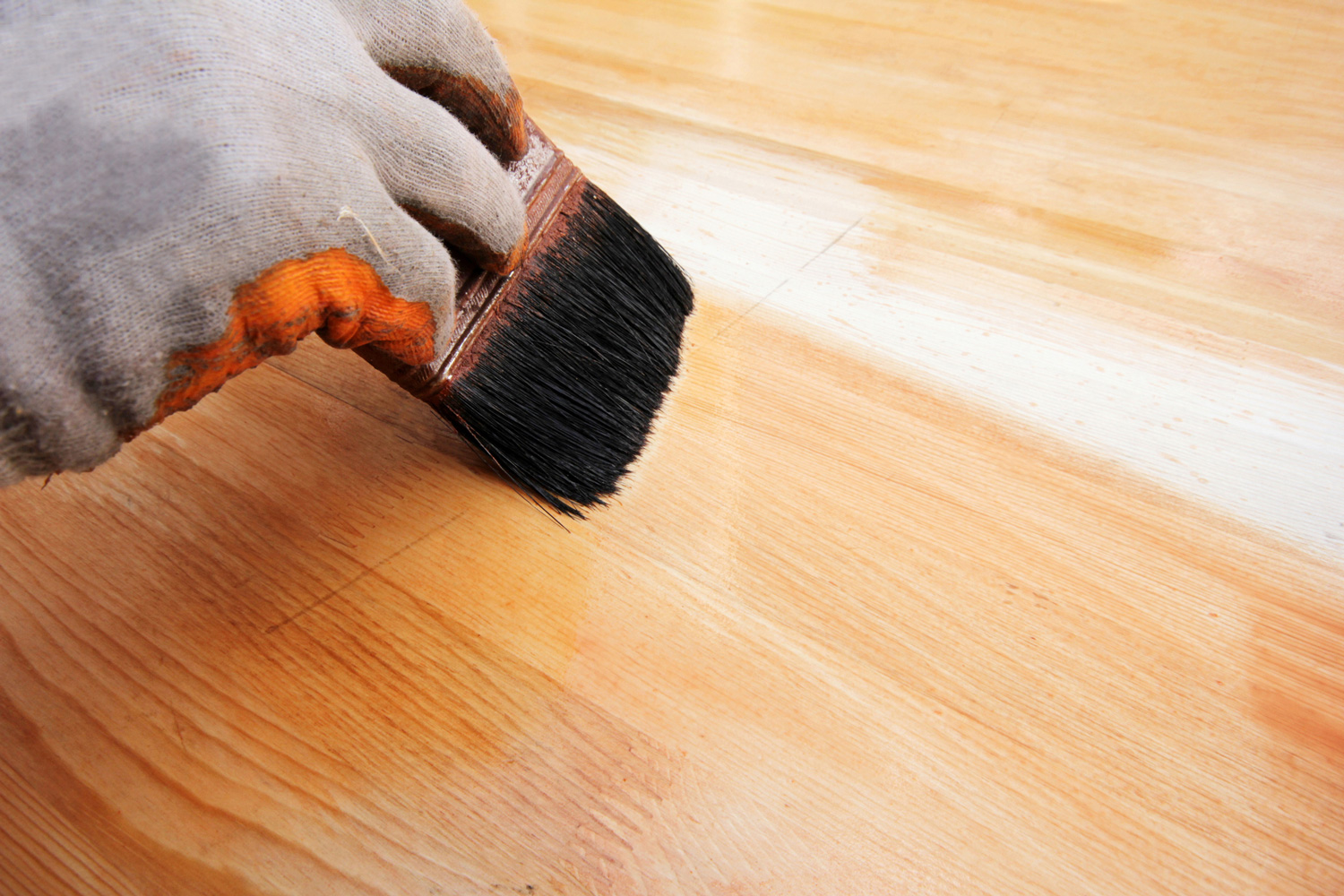
What Temperature Does it Need to Be for Staining Wood?
There is no set temperature for staining wood, but the ideal temperature is between 50-80 degrees Fahrenheit.
If it's too cold, the stain will take longer to dry. If it's too hot, the stain can start to evaporate before it has a chance to soak into the wood.
You'll also want to avoid staining wood in direct sunlight. The heat from the sun can cause the stain to dry too quickly.
It's best to stain wood on a day when the temperature is mild and there is no direct sunlight. You can always wait for a better day if it's too hot or cold.
Does Wood Stain Cure Faster in Dry or Humid Conditions?
Wood stain cures faster in dry conditions. If it's too humid, the stain can take longer to dry.
While direct sunlight isn't a good idea, indirect sunlight can help the stain cure faster. If you are staining wood indoors, you can turn on a fan to help circulate the air and speed up the drying process.
If you live in a region where it is humid, you can set up a dehumidifier to help remove some of the moisture from the air. This will help the stain dry faster.
In general, it's best to avoid staining wood in humid conditions. If it's too humid, you can wait for a drier day or take steps to remove some of the moisture from the air.
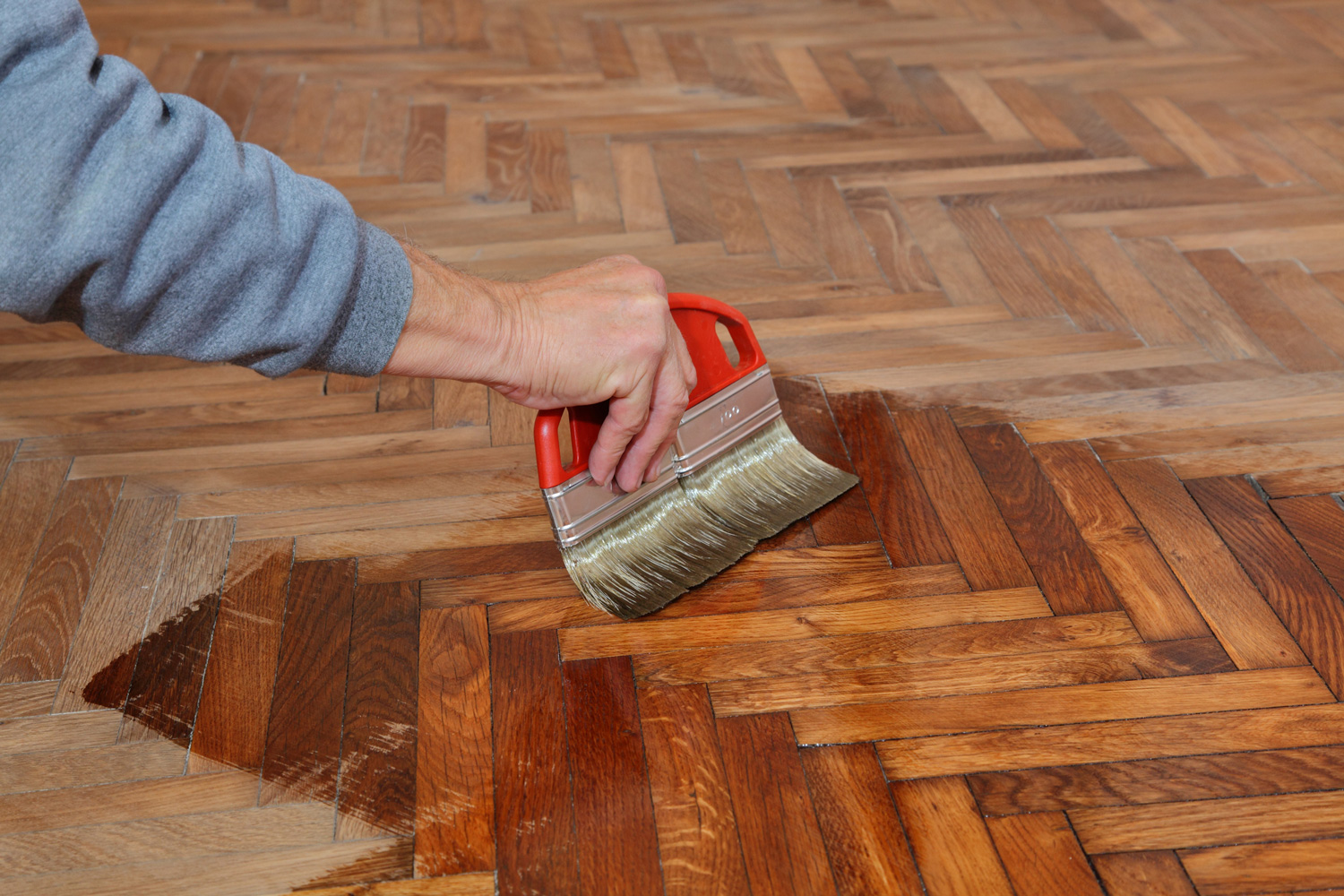
Final Thoughts
By following the tips in this article, you can ensure that your wood staining project goes smoothly.
Remember to take precautions to avoid exposure to fumes and dust and to stain on a day when the temperature is mild. If you live in a humid area, you may want to take steps to remove some of the moisture from the air.
Made it to the end? Here are other articles you might find helpful:
Footprints On Stained Deck – How To Prevent And Fix


